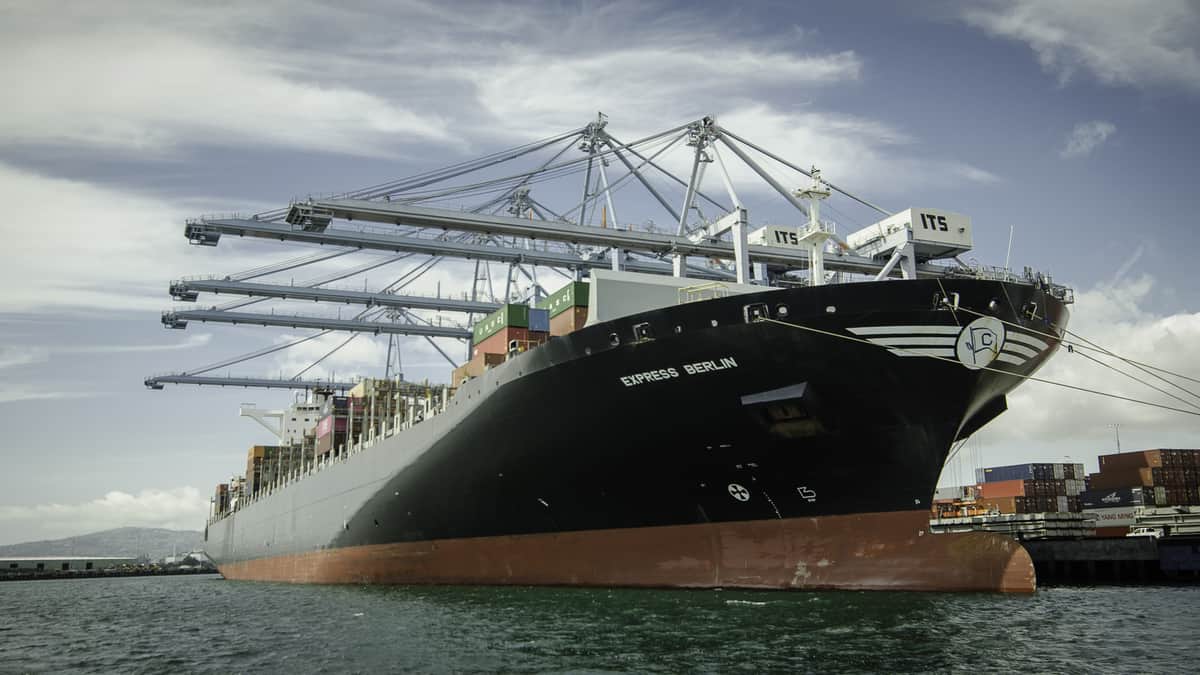Politically, the U.S. and China are barely on speaking terms. Trade-wise, they’re still very much in bed together.
China cargo is accounting for an even greater share of inbound volumes than before COVID-19, according to new data.
China flows have helped blunt volume fallout along the U.S. West Coast. The Port of Long Beach disclosed on Tuesday that it had handled 312,590 loaded inbound twenty-foot equivalent unit (TEU) containers in May. That’s up 7.6% year-on-year and up 23.3% from April.
Demand for Chinese goods has also caused rates to surge.
According to Freightos Chief Marketing Officer Eytan Buchman, “It’s been a tough few weeks … unless you’re an ocean liner on the China-U.S. West Coast, where rates just shot up 17% week-on-week.”
Down, up, down, plateau
FreightWaves’ SONAR platform tracks the seven-day moving average of the number of U.S. customs filings (SONAR: CSTM.USA). Although each filing can refer to any volume, filing frequency has proved to be an accurate signal of big market swings in container import volumes.
The data shows that customs filings plunged as expected through February and early March due to the supply-side shock of the closure of China’s export system. They then rebounded in late March and April as China’s export system was reopened and cargoes arrived in the U.S.
Customs filings plunged as expected in late April and the first half of May due to an order pullback by U.S. importers in the wake of state lockdowns. This corresponded with the period when container lines “blanked” (canceled) a record number of sailings to align vessel capacity with demand and maintain freight rates.
But the slide in U.S. filings halted during the second half of May and levels were maintained through the first week of June. The number of filings has at least temporarily stabilized above the lows seen after the lockdown in Wuhan, China.

China driver
Since the low point in U.S. customs filings, the driver of the improved numbers is clear: China.
The average number of daily filings rose 34% between March 16 and June 3. The increase in average filings for imports from China (SONAR: CSTM.CHNUSA) during the same period was an unambiguously enormous 325%. Customs declarations for Chinese imports increased 41% year-on-year.

A pattern of import filings halting their slide at a higher level than after the Wuhan lockdown is also seen at the primary West Coast ports of Los Angeles (SONAR: ICSTM.USLAX) and Long Beach (SONAR: ICSTM.USLGB).

Data from an entirely different source on loaded outbound 40-foot containers from Los Angeles to Dallas (SONAR: ORAIL40L.LAXDAL) shows the same trend line.

If volumes from China to California are coming in higher than expected, trans-Pacific spot rates should be rising faster relative to other lanes.
The Freightos Baltic Daily Index tracks the daily price to ship a container. Over the three months ending Monday, Freightos indices show that rates from China to the West Coast (SONAR: FBXD.CNAW) are up 62%, more than double the pace of other indices including the global average, China-East Coast, China-North Europe and China-Mediterranean.
“The unexpected spike in demand over the last few weeks combined with tight capacity to push [China-U.S.] rates up,” said Buchman, who noted that rates have not been this high since January 2019.

It’s not over yet
The better-than-expected volume of Chinese containers is welcome news for America’s outbreak-battered economy. But the consequences of the crisis are far from over. “Celebrating may be premature [as] demand is still expected to lag through September,” cautioned Buchman.
According to Nerijus Poskus, head of ocean freight for Flexport, “We had a few extra loaders arrive to PSW [Pacific Southwest] ports at the beginning of June. This is why you might see a temporary spike. While volumes are slightly better than expected, 15% of PSW capacity is blanked next week.”
“It’s too early to say we’re out of the woods,” he told FreightWaves.
Long Beach container statistics:














